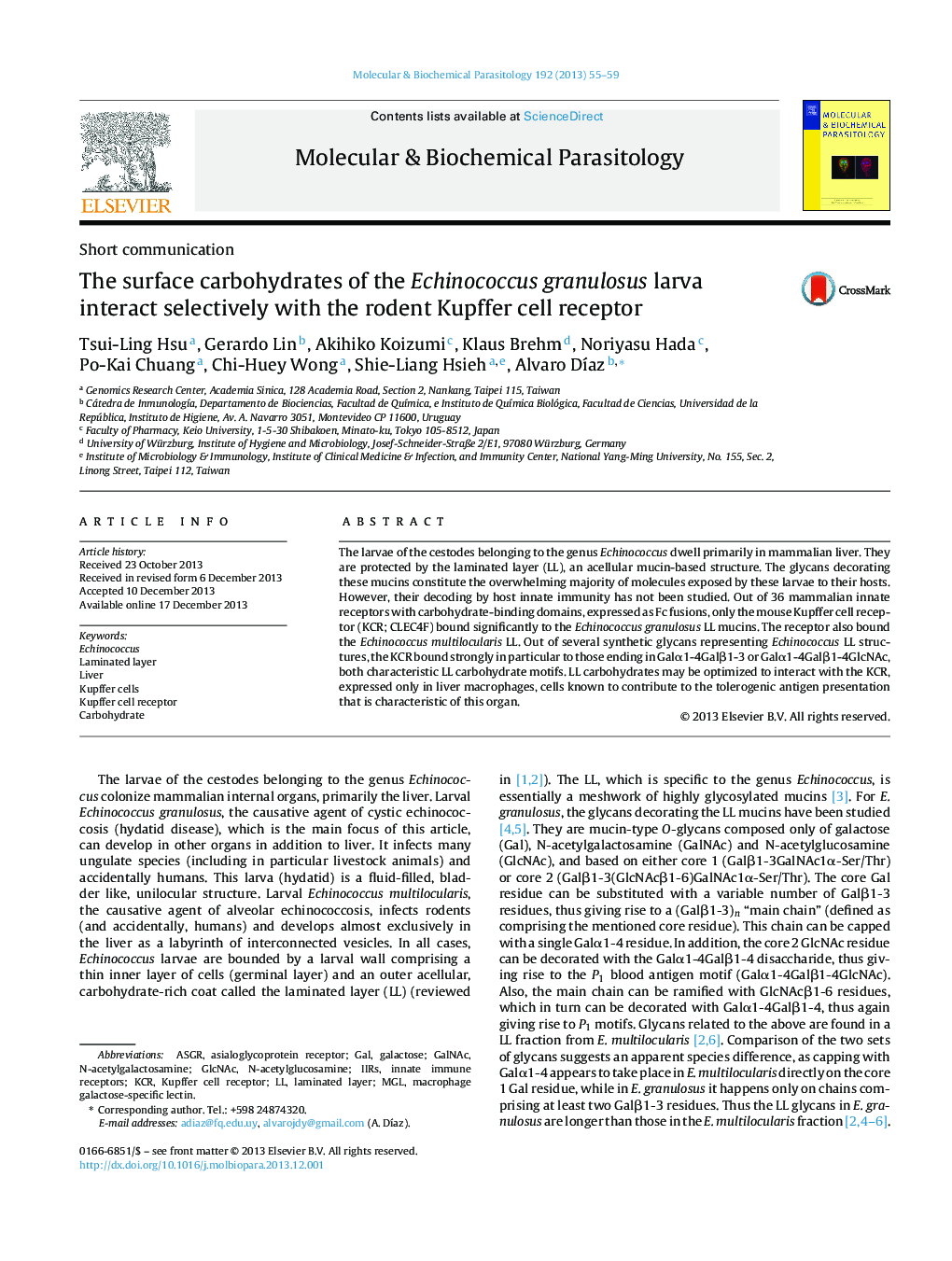| Article ID | Journal | Published Year | Pages | File Type |
|---|---|---|---|---|
| 2829768 | Molecular and Biochemical Parasitology | 2013 | 5 Pages |
•Echinococcus larvae dwell in liver and expose to the host mostly carbohydrates.•We observe that these carbohydrates engage selectively the Kupffer cell receptor.•The Kupffer cell receptor is expressed only in liver macrophages of rodents.•Rodents are the likely ancestral hosts for Echinococcus.•Liver macrophages are known to contribute to tolerogenicity typical of this organ.
The larvae of the cestodes belonging to the genus Echinococcus dwell primarily in mammalian liver. They are protected by the laminated layer (LL), an acellular mucin-based structure. The glycans decorating these mucins constitute the overwhelming majority of molecules exposed by these larvae to their hosts. However, their decoding by host innate immunity has not been studied. Out of 36 mammalian innate receptors with carbohydrate-binding domains, expressed as Fc fusions, only the mouse Kupffer cell receptor (KCR; CLEC4F) bound significantly to the Echinococcus granulosus LL mucins. The receptor also bound the Echinococcus multilocularis LL. Out of several synthetic glycans representing Echinococcus LL structures, the KCR bound strongly in particular to those ending in Galα1-4Galβ1-3 or Galα1-4Galβ1-4GlcNAc, both characteristic LL carbohydrate motifs. LL carbohydrates may be optimized to interact with the KCR, expressed only in liver macrophages, cells known to contribute to the tolerogenic antigen presentation that is characteristic of this organ.
Graphical abstractThe abundant mucin glycans that cover Echinococcus larvae bind selectively to a host lectin receptor expressed only in the liver, the major infection site.Figure optionsDownload full-size imageDownload high-quality image (165 K)Download as PowerPoint slide
